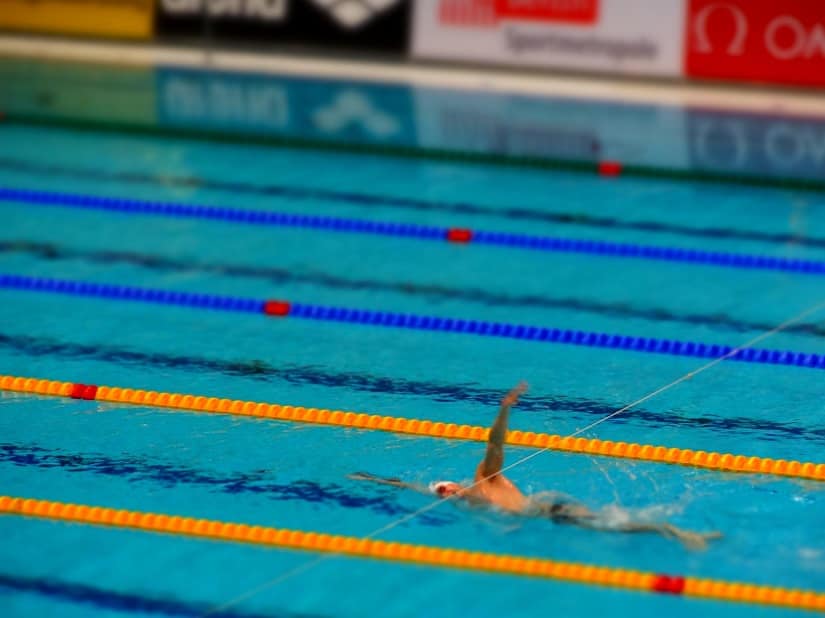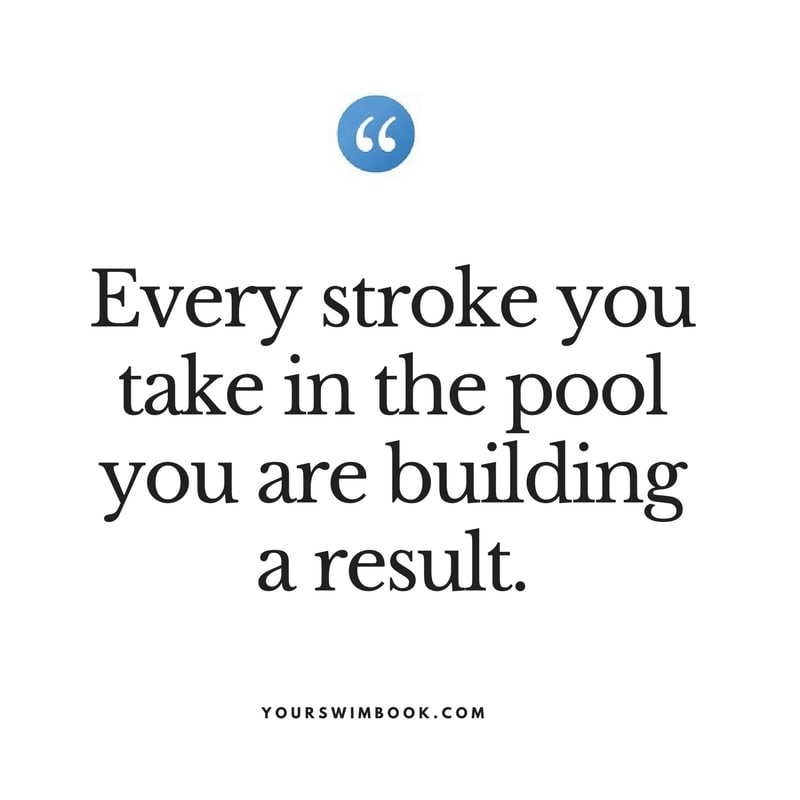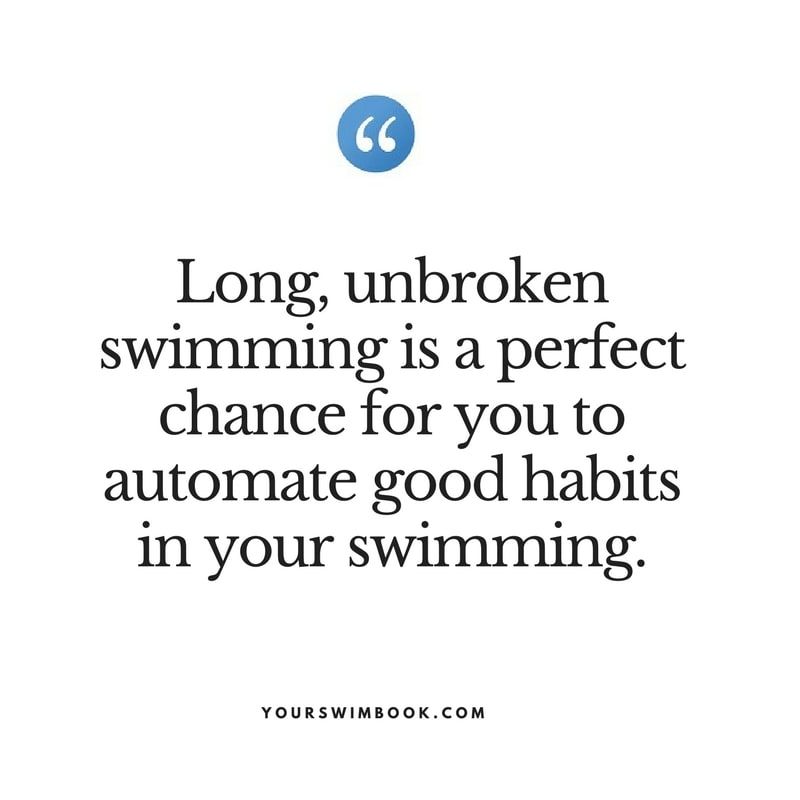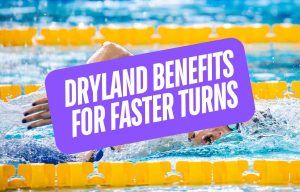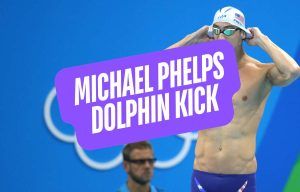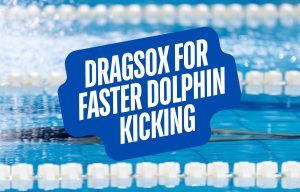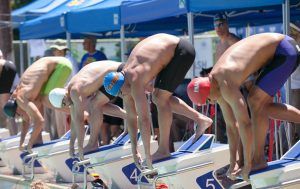Want to improve your feel for the water? Better technique? Awesomer underwaters? Here’s how long and focused bouts of swimming will help you become a better swimmer.
Who here loves themselves a little bit of a lot of straight distance swimming?
How about you with the smartphone to your face?
No? No one?
That’s too bad.
Cause even though people love to call anything distance “garbage yardage” there is some very real benefits to swimming long, unbroken sets.
Even beyond the whole health-and-aerobic-benefits-of-swimming thing.
Before you close the browser from sheer laughter—“Distance swimming? Fun? Har-har-har!”—hear me out.
“Garbage Yardage”
First, I want to clear up two things.
1. Distance work isn’t and shouldn’t just be about building an aerobic base.
I think this is the misconception that most surrounds longer distance sets, that it’s only for building aerobic capacity. While some programs and coaches may design it this way, it’s not exclusively the case.
In the paraphrased words of Alex Popov’s old coach, Gennadi Touretski, who often had his charges, who were among the greatest sprinters of all-time perform 5k’s straight in practice:
Every stroke is another opportunity to program correct technique.
Those big, long sets aren’t just for getting in shape.
2. Anything not race pace is essentially drill work.
The eternal debate with coaches is the quality vs. quantity debate. There is no definite, 100% “right” answer, mainly because the way that each athlete responds to varying degrees of each will, uh, vary.
Some swimmers respond better to lots of low intensity training, while others thrive in an almost race-pace exclusive environment.
There is no one-size-fits-all approach to training, and this is where the science of coaching turns to art.
Now, if you take two swimmers, one of them doing an additional 2,000m of slowish, but technically devastating freestyle, and the other is not, which one do you suppose will end up with a far more efficient freestyle in the long run?
Adaptations take time to create and solidify. We are not naturally adept at the movements required for high performance swimming. And I suspect that this is an influential reason that swimmers who come from programs who don’t shy away from yardage can sprint like crazy.
They’ve had ample opportunity to multiply their feel for the water and technique into greater efficiency.
Names like Matt Biondi, who regularly swam 12,000-13,000m a day, Cam McEvoy (and some of his sets), and even American sprint star Caeleb Dressel and his 8,000m+ workouts at Florida, are all examples of excruciatingly fast swimmers who thrive within programs with decent yardage.
While there are the aerobic benefits of long, unbroken swimming (I am fond of the 5,000m-straight variety), it’s the technical and efficiency benefits that most interest me.
Here’s what I mean.
You crush the fundamentals.
Every meter that you swim that is not pace or not going off the blocks is technically drill work. Whether you realize it or not, every stroke, every lap you take you are building a result.
You are quite literally drilling your stroke into place, so that when you step up on race day the swimming you do is largely automatic.
Long, unbroken swimming is drill work—you are working on your hand entry, tightening up your streamline…in other words, focusing on improving your technique.
Race pace work will forever be the bread and butter of swim training. To swim fast you need to train fast. It’s about as simple as that.
But you can only do so much race pace work each day before your body and your CNS start to fray, leading to diminishing returns.
Although the idea of doing an unending number of sprint 50’s off the blocks over two hours sounds like it would be great for you, your body can only handle so much of that full intensity work.
Those long, slow swims?
Perfect for dialing in your breathing pattern. Improving your streamline. Working your dolphin kicks.
The high yardage swims are the foundation of your high intensity work, a place where you can dial in your stroke and the technical aspects of your swimming so that it’s second nature when you dial it up later.
Feel the rhythm, feel the rhyme.
One thing you will pick up over the course of your many laps of straight swimming is a better sense of rhythm with your swimming.
While I can’t speak on your experience, it takes me a while to get my stroke into an efficient cadence. Typically around 1000-1500m, sometimes less, sometimes more.
Once you do hit that rhythm though, you feel like you could go forever. Long, unbroken swimming gives you a chance to find and maintain that rhythm for extended periods of time without the pesky interruption of things like “intervals.”
Automate better habits in your training.
Low intensity swimming gives you an opportunity to improve the habits in your swimming.
Here’s one example.
The underwater dolphin kick has become the unofficial fifth stroke of swimming. To excel, particularly in the short course format that is so prevalent in the United States, you need to be able to dolphin kick like a son of a gun. If you want to compete at the highest levels strong underwaters are also mandatory.
The way swimmers train it tends to go along these lines: they see a fellow swimmer kill it with their underwaters, promise themselves to work on it in practice, do half a workout with extended breakouts, and then drop off quickly and revert back to their old habits.
Instead of trying to go from 5m to 15m breakouts, implement the wholly underrated power of marginal gains and do 7m walls for a full 5,000m of easy swimming.
Not only will your dolphin kick feel awesome by the end of that rep, but you will have gone a long way towards making 7m breakouts the new baseline with your swimming.
You can do this with bilateral breathing patterns. Your streamlines. Even the way you approach your flip turns. Pick something and hammer the crap out of it with a mountain of perfectly-executed reps.
Long, unbroken swimming is a perfect chance for you to automate good habits in your swimming.
You improve your relationship with the water.
Trying to describe the way swimmers chase a better feel in the water can be hard to explain to the non-swimmers in our lives. We know how good it feels, and how crappy our swimming feels when it’s not there for us.
And so we perform various drills, do lots of sculling, all in order to try to enhance that feeling, even for a little bit.
Those extended bouts of swimming? It’s a long way to get that feel for the water, but it works.
After a long focused swim of a few thousand meters my stroke simply feels amaze-balls. I’ve had ample chance to swim properly, with the exact technique that I want (or at least, as close to as I can get).
Even sprinters can do this.
Over the course of a full week earlier this year I performed a 5,000m (done in a long course pool to lessen the amount of times I lost count, which was still fairly often) each morning as part of my workout.
From Sunday to Saturday, each day I dutifully performed this set.
There was still sprint work done at the end of each session to keep the fast twitch muscles alive (8×25 from the blocks on 2:00), and a couple times I would swim a couple hundred meters, do the 5k, and be done with the practice.
The key to making this work—as a sprinter, in particular—was maintaining the same technique I would when racing.
The goal was to throw a metric ton of reps of perfect technique in order to more deeply automate the stroke I wanted.
In order to do this, I used a snorkel for those 5ks to maintain a shoulder-driven freestyle, with my head facing the bottom of the pool, and greater attention paid to that early hand catch.
The result?
My sprint work felt lights out. With my stroke dialed in, all I had to do was stomp on the gas and off I went.
It will teach you to really focus.
Physically, doing this kind of work isn’t going to crush you. While there will be some general fatigue, you won’t be splashed across the deck heaving your chest up and down for breath at the end of it.
The challenge is more mental.
Your mind will wander. You will lose count of how many 100s you’ve done (“Is this one #28, or is the next one #28?”). You will find your technique reverting back to the standard way of doing things the moment your attention floats away.
Being able to maintain your focus for this long is hard, and oddly meditative. You’ll find that focusing during your other sets will become easier. That you can hold your attention
Make no mistake, focusing on swimming with killer technique for lap after lap, for upwards of an hour is not easy. But it does get easier.
Two Keys to Making This Kind of Swimming Really Work
- Back off when you feel your stroke start to fall apart. The whole point is to swim awesome, so the moment you start T-rexing, or the piano falls on your back, slow down or take a rest before resuming.
- Add some speed work from time to time. Every once in a while ramp up the speed Fartlek-style. Once you’ve got your rhythm and stroke nailed, drop the hammer for a dozen or so strokes and return to your cruising pace to give yourself the chance to feel your best stroke at different paces.
The Caveat
It’s boring. There, I said it.
For most swimmers, the idea of getting in the water, and literally staring at the black line for an hour straight is blasphemous. Yawn-inducing. And so they won’t do it. Or they’ll fight it and mentally check out.
But the benefits of this kind of “boring” training are legit.
You’ll develop:
- A large inventory of swimming done with perfect technique, which will help you swim more efficiently as the intensity goes up.
- A better feel for the water and improved distance per stroke.
- A low-pressure opportunity to automate good habits in your training.
- And a heightened sense of focus and concentration.
More Stuff Like This:
The Ultimate List of Workouts for Competitive Swimmers. Our ever-growing list of workouts and sets for competitive swimmers, including stuff from Michael Phelps, Katie Ledecky, Ryan Lochte, and more. Giddyup!

